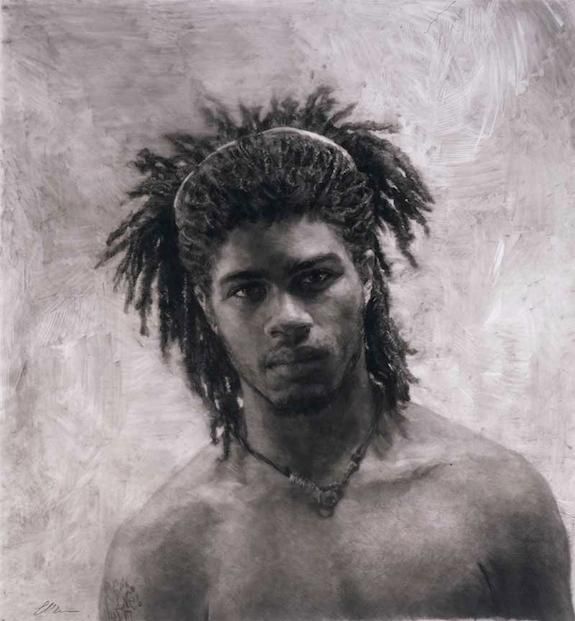Drawing on the Edge: Six Contemporary Portraitists Challenge Convention
Six young artists leave their mark on portraiture with the National Portrait Gallery’s new exhibit
/https://tf-cmsv2-smithsonianmag-media.s3.amazonaws.com/filer/4f/c9/4fc98d66-69db-4382-a8cc-55565685e207/ahuja.jpg)
Drawing has long been prized for its immediacy, from those revealing offhand doodles made by celebrities to the first drafts of masterpieces. But the craft was seen as an intermediate step, without the finished quality of other media. National Portrait Gallery curator Wendy Wick Reaves says that’s changing: “Throughout the 20th century, there’s been a steady rise in the importance and seriousness of drawing and contemporary artists are particularly ambitious and bold.”
The new exhibit, “Portraiture Now: Drawing on the Edge” at the Portrait Gallery now seeks to reexamine the medium with the work of six contemporary artists. The seventh show in the gallery’s series, the exhibit features 51 pieces that explore the psychological intensity of portraiture. Though not all strictly drawings, the works share a handmade quality that reveals the mark-making process of the artist.

“The similar theme is that each is so engaged with process,” says Reaves. “It almost becomes a meditative engagement because each of these artists approach their art with very meticulous craft.”
Mary Borgman, for example, creates large-scale portraits with charcoal, laying bare the process of erasing and smudging that goes into each image. The final product becomes a sort of meeting point between the subject and the artist. The responsiveness of charcoal records Borgman’s movements as much as it does the sitter.
Other artists look to more metaphorical means of mark-making to look at the intersection of craft and portraiture. Mequitta Ahuja works with a mix of collage and brushwork to construct a layered surface. Emphasizing the show’s thesis that process holds meaning, Ahuja writes in her artist’s statement, “I view painting and drawing as a cumulative process of time and marks. Whether using crayon, brush, palette knife, collage or printing block, I build form and surface through the accumulation of lines and strokes.” Ahuja’s series Automythography functions as an evolving self-portrait; part mythology, part reality. Tying her artistic process to the content of her creations, she writes, “The physicality of my technique is mirrored by my female protagonist’s assertive presence. She is both subject and maker of her world.”

Still another artist from the show uses words to construct his portraits, inspired by mugshots of people from his hometown. Ben Durham, from Kentucky, even makes his own paper. He told Art in America, “The paper takes on the history of my hands, gets into the drawing.”
Everything from LED lights to watercolors to graphite shows up in the exhibit’s works. Weaves says, “I think their approaches, their goals can be quite different from one to the other.” But organizing the works around the idea of drawing helps draw the diverse pieces together.
“They’re kind of extending how we define drawing,” says Weaves. “Each of them is really focused on that highly personalized and stylized kind of mark-making that we associate with direct drawing.”
Though the artist’s treatments can seem a radical reinterpretation of drawing, Reaves says drawing has been going through a slow repositioning over time. Drawing was traditionally part of an artist’s academic training. “Often it was a memory aid or a quick sketch or a study for something else,” she says. “Then eventually it became something you would build an exhibition around, some of the Impressionist painters exhibited their drawings.” Now, Reaves says artists approach drawing with an unprecedented ambition.
The works from Borgman, Ahuja, Durham, as well as Adam Chapman, Till Freiwald and Rob Matthews explore some of the directions that ambition is leading.
“Portraiture Now: Drawing of the Edge” runs through August 18, 2013 at the National Portrait Gallery.
/https://tf-cmsv2-smithsonianmag-media.s3.amazonaws.com/accounts/headshot/Leah-Binkovitz-240.jpg)
/https://tf-cmsv2-smithsonianmag-media.s3.amazonaws.com/accounts/headshot/Leah-Binkovitz-240.jpg)